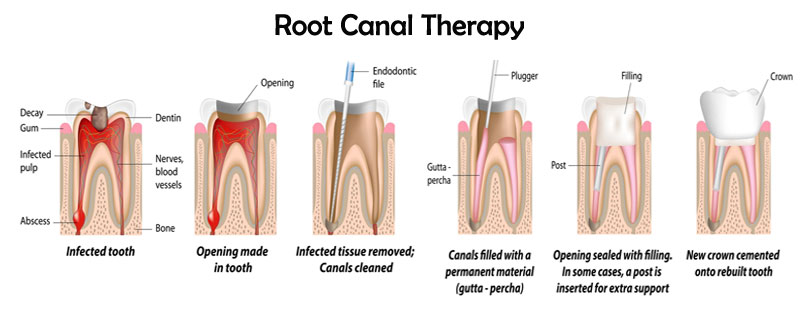Single Visit Endodontics
Clincians have been providing single-visit and multiple-visit endodontic treatments for their patients. This study aims to compare the success rate, prevalence of postoperative pain and chairside time of single-visit and multiple-visit endodontic treatments.
Treatment outcomes of single-visit versus multiple-visit
non-surgical endodontic therapy: a randomised clinical trial
Method
Patients who required primary endodontic treatment in a university dental clinic were randomly allocated to two general dentists for single-visit or multiple-visit treatments using the same materials and procedures. Ni-Ti rotary files were used to prepare the root canals, which were subsequently obturated with a core-carrier technique. The chairside time was recorded. The treated teeth were followed up every 6 months on clinically signs and symptoms including pain, tenderness to percussion, sinus tract, mobility and abscess. Periapical radiographs were taken to assess periapical pathology. Successful treatments were neither clinical signs/symptoms noted nor radiographic periapical pathology found postoperatively.
Results
A total of 220 teeth from patients aged 46.4 ± 14.1 were followed up for at least 18 months. The mean (±SD) follow-up period was 29.4 ± 9.3 months. The success rates of single-visit and multiple-visit treatments were 88.9 and 87.4 %, respectively (p = 0.729, effect size odds ratio = 1.156). The average chairside times of single-visit and multiple-visit treatments were 62.0 and 92.9 min, respectively (mean difference = −30.9, 95 % CI: −39.4 to −22.4, p < 0.001, effect size odds ratio = −0.996). Single-visit and multiple-visit treatment had no significant difference in the prevalence of postoperative pain within 7 days (21 and 12 %, p = 0.055, effect size odds ratio = 2.061) and after at least 18 months (0.9 and 1.0 %, p > 0.999, effect size odds ratio = 0.879).





